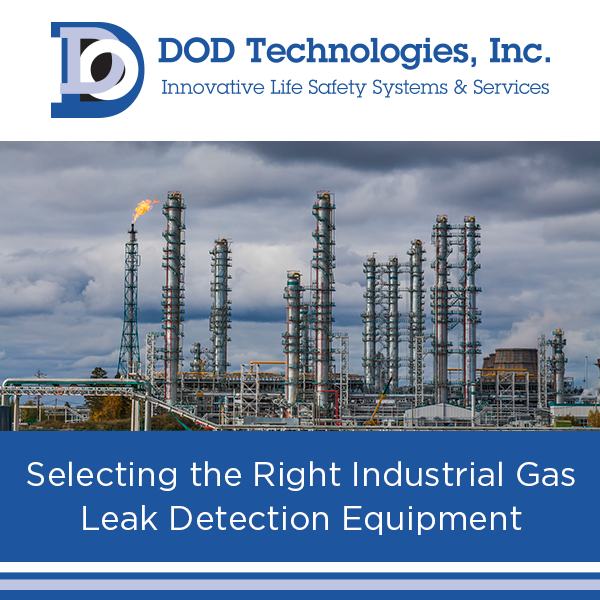In complex work applications, such as labs and industrial settings, air quality must be monitored to ensure safe working conditions for employees and meet company and governmental compliance requirements. Facilities that produce hazardous gases require respiratory equipment, but that alone may not provide adequate protection.
Different types of industries generate different types of gases (depending on what is being manufactured). Those gases are identified in three categories: combustible, asphyxiating, and toxic. All three categories require gas detection monitors as well as environmental monitoring equipment to prevent unsafe working conditions.
Combustible
This type of gas can flammable properties when mixed with air or oxygen, or are ignited. Examples of combustible gases are:
- Methane
- Pentane
- Propane
- Butane
- Hydrogen
Combustible gas sensors are placed in locations where the danger of accumulation can create a combustible situation. It is possible for the gas to leak into a facility naturally or unintentionally, which proves the need for monitoring equipment. Detectors for combustible gases generally measure combustion concentrations from lower explosive limits (LEL) to upper explosive limits (UEL).
Asphyxiating gas leak detection
Although asphyxiating gases are non-toxic, they reduce or remove normal oxygen levels, leading to asphyxiation. Examples of asphyxiating gases are:
- Nitrogen
- Argon
- Helium
- Butane
- Propane
Applications utilizing pressurized gas cylinders or liquefied gases stored in dewars for cryogenic storage should be especially mindful of leaking issues. Oxygen deficiency monitors are commonly used in those situations.
Toxic
Toxic gases can be located naturally or in industrial environments. This type of gas can possess odor, be odorless, colorless, and undetectable until serious symptoms arise. Examples of toxic gases are:
- Carbon Monoxide
- Hydrogen Sulfide
- Solvents (gasoline, kerosene, and paint strippers)
- Phosphine
- Chlorine
Toxic gas detectors allow constant monitoring of gas concentrations present in the air. If the concentration increases, an alarm sounds. Oxygen depletion detectors can often be found in conjunction with toxic gas monitors.
Fixed gas detection systems alert employees if there is a catastrophic leak or low-level toxic, corrosive, or combustible gases. Detection systems provide an early warning for potentially life-threatening situations. Regular maintenance is required to ensure optimal performance and accuracy.
DOD Technologies values the safety of all personnel and work environments by offering a variety of portable and fixed gas detection systems for your needs. Do you have a question regarding gas detection within your application? With more than 150 years of combined instrumentation and application knowledge, DOD Technologies is prepared to offer its expertise and solutions for your toughest requirements while keeping you, your employees, and your equipment safe.
Contact us today via phone at (815) 788-5200 or through our web form.







